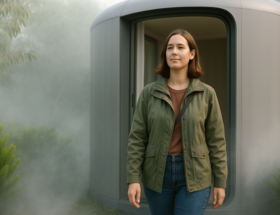Good day and welcome to GertieBlu, your go-to source for eco-friendly tips and sustainable living. Today, we’re exploring a topic that’s not just crucial for our planet, but also for future generations—recycling household waste properly. If you’ve ever found yourself staring at a bin, wondering which items can be recycled and which can’t, this post is for you. Let’s break down the process and make recycling as straightforward and effective as possible.
Understanding the Basics of Recycling
Recycling is more than just tossing items into a blue bin. It’s about understanding what materials can be recycled and how to prepare them so they can be reused effectively. Here are the key categories of household waste that are typically recyclable:
- Paper and Cardboard: Newspapers, magazines, paper bags, and cardboard boxes are all recyclable. However, make sure they are clean and dry. Grease-stained pizza boxes, for example, cannot be recycled due to contamination.
- Plastics: Most plastic containers, like bottles, jugs, and tubs, are recyclable. Check for the recycling symbol and number on the item to know if it’s accepted in your local program. Remember to rinse out any food residue before recycling.
- Glass: Glass bottles and jars are commonly recycled. Ensure they are clean and free of lids or caps. Not all glass is recyclable though—ceramics, mirrors, and light bulbs should be disposed of differently.
- Metals: Aluminum cans, tin cans, and even foil are recyclable. Like other items, they need to be clean. Items like paint cans or aerosol cans, however, require special disposal methods.
- E-Waste: Old electronics, like phones, batteries, and computers, can be recycled but not in your regular bin. Most communities have special drop-off locations for e-waste.

Common Recycling Mistakes
Even with the best intentions, it’s easy to make mistakes that can contaminate an entire batch of recyclables. Here are a few common pitfalls to avoid:
- Plastic Bags: These are a major contaminant in recycling systems. They can tangle in machinery and cause significant problems. Instead, reuse or take them to designated recycling points often found at grocery stores.
- Food-Soiled Items: Leftover food and grease can spoil an entire batch of paper recyclables. Always rinse containers and ensure items are free of food before recycling.
- Mixed Materials: Products made from multiple materials (e.g., a plastic bottle with a metal lid) can be problematic. Separate them before recycling when possible.
- Wishcycling: This term refers to the hopeful act of placing non-recyclable items in the recycling bin. If you’re unsure whether something is recyclable, it’s better to check first than to risk contaminating the recyclables.
How to Set Up a Recycling System at Home
Creating a home recycling system doesn’t have to be complicated. Here’s how you can get started:
- Label Your Bins: Clearly label bins for paper, plastics, glass, and metals. If you have the space, consider an additional bin for items that need special recycling (like batteries or electronics).
- Educate Your Household: Make sure everyone in your home understands what can and can’t be recycled. Consider posting a list of recyclable items near your bins for easy reference.
- Reduce and Reuse First: Before recycling, think about how you can reduce waste or reuse items. For instance, use reusable bags, containers, and water bottles to cut down on single-use plastics.
- Stay Informed: Recycling guidelines can vary by location, so it’s essential to stay updated on what’s accepted in your community. Check your local municipality’s website for current information.
The Bigger Picture: Why Recycling Matters
Recycling is a critical part of reducing our environmental impact. By recycling, we conserve natural resources, save energy, reduce greenhouse gas emissions, and minimize the amount of waste that ends up in landfills. It’s a small act that, when done correctly, contributes to a much larger positive effect on our planet.

Final Thoughts
Recycling properly isn’t just a responsibility—it’s an opportunity to make a tangible difference. By taking the time to understand and follow best practices, you can help ensure that the materials we use are given a second life, reducing our environmental footprint. Remember, every little bit helps, and together, we can create a cleaner, greener world.
If you found this guide helpful, please share it with your friends and family, and let’s all do our part in recycling properly.
Thank you for visiting GertieBlu 🌿









